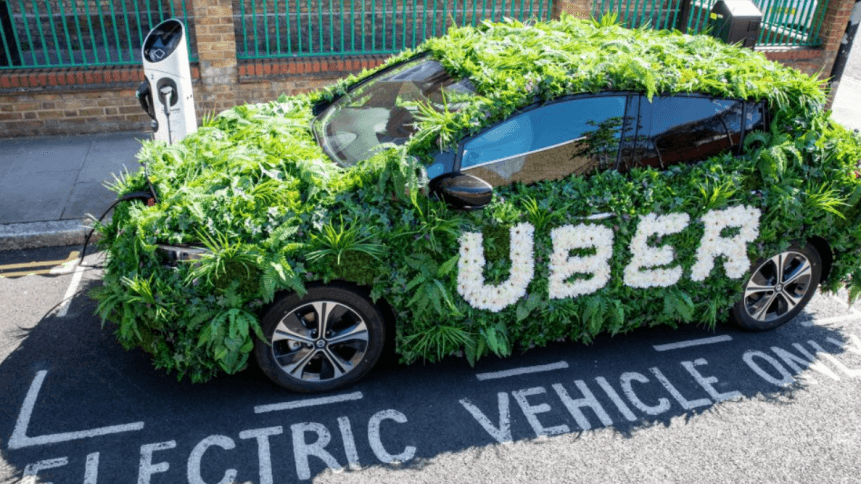Uber commits to going fully-electric by 2040 or sooner

Every taxi booked through the Uber app will be electric by 2040, the ridesharing giant says.
In the US, Canada, and Europe, Uber is confident that will be the case by 2030. The ride-hailing firm is committing US$800 million to help drivers switch to electric cars, as well as building partnerships with EV-makers in order to secure discounts.
Uber claims the move forms part of its “responsibility as the largest mobility platform in the world.” If successful, hitting those goals would put the firm ahead of Paris Climate Agreement targets.
A blog announcement read: “We’ll seek to build the most efficient, decarbonized, and multimodal platform in the world for on-demand mobility.
“While we’re not the first to set ambitious goals in transitioning to EVs, we intend to be the first to make it happen. Competing on sustainability is a win for the world, and today we challenge other mobility platforms to transparency, accountability, and more action.”
Uber and other ridesharing firms, such as Lyft, have been frequent targets of criticism over contributions to urban congestion and air pollution. Ride-hailing is a quick and convenient option for mobility, but research suggests consumers often choose these services over greener alternatives, like walking, cycling, or public transport.
Uber’s plan contains four key actions:
- Expanding Uber Green to make it easier for riders to choose to travel in hybrids or EVs — Uber Green will be launched in 15 US and Canadian cities and enables customers to pay an extra dollar to request an EV or hybrid vehicle. Riders will also receive 3x the reward points.
- Committing US$800 million in resources to help hundreds of thousands of drivers transition to EVs by 2025 — Part of this will be subsidized by the surcharge above, and from fees it collects under its London and French Clear Air Plans. They amount to around 15 cents per ride to pay for the electrification of its cars in European cities.
- Investing in a multimodal network to promote sustainable alternatives to personal cars — Uber will continue to offer bikes and scooters in its app where possible, following its investment tie-up with Lime and integration across more than 55 cities. It will enhance its carpool feature and continue to develop transit partnerships to offer journey planning alternatives to its cars.
- Being transparent and accountable to the public — The firm is releasing a Climate Assessment and Performance Report to measure and report on emissions from customers’ real-world use of its products. The report analyzes real-world data from the nearly 4 billion rides facilitated by Uber’s platform in the United States and Canada from 2017 through 2019.
YOU MIGHT LIKE

Uber buys Autocab in bid to expand ridesharing empire
Before this week’s announcement, Uber already had announced a “bold plan” to ensure every vehicle operating in London — where it’s had a rocky few years — was fully-electric by 2025.
Uber’s announcement follows renewed environmental commitments by fellow Silicon Valley tech giants like Microsoft and Apple. But some have accused the firm of ‘greenwashing’ or ‘virtue signaling’, while others have pointed out that, by 2030 or later, its fleet is likely to be partially or fully-autonomous anyway, and therefore electric by default.









